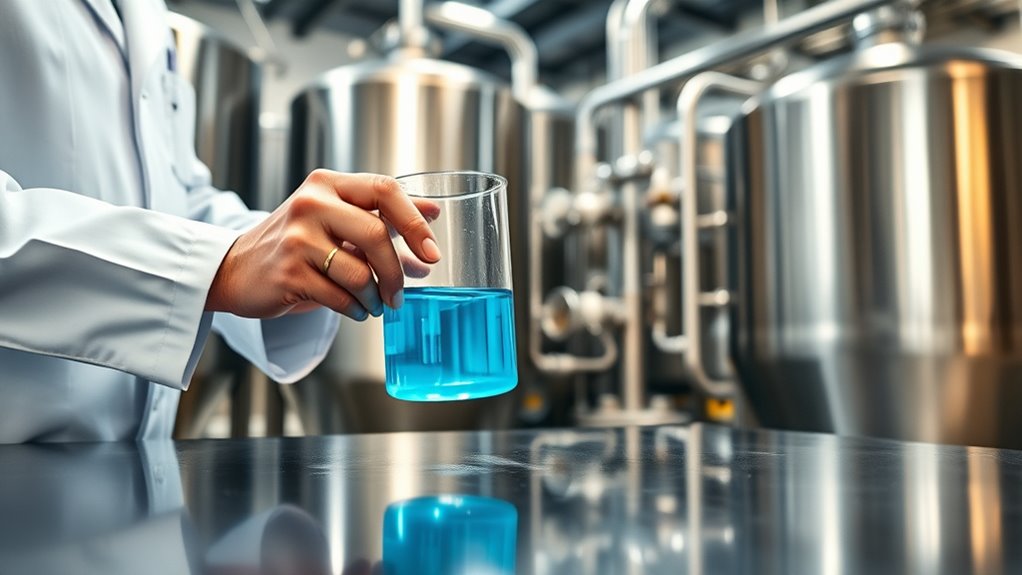To source high-purity phosphoric acid for fertilizers, focus on suppliers following strict extraction methods like the wet process, which guarantees product quality and safety. Check their certifications, track record, and capacity for customization to ensure reliability. Stay informed about industry innovations and sustainable practices that reduce environmental impact. Choosing reputable, eco-conscious suppliers helps you receive safe, high-quality product. Keep exploring to discover more ways to optimize your sourcing strategy effectively.
Key Takeaways
- Select certified suppliers with proven quality standards and transparent documentation of purity levels.
- Prioritize suppliers utilizing sustainable and environmentally friendly production methods, such as recycling and renewable energy.
- Evaluate supplier reliability based on track record, delivery consistency, and industry reputation.
- Ensure compliance with regional regulations and certification standards (ISO, industry-specific) for product safety.
- Opt for suppliers offering customization options and strong customer support to meet specific fertilizer formulation needs.
Extraction and Production Methods of High-Purity Phosphoric Acid
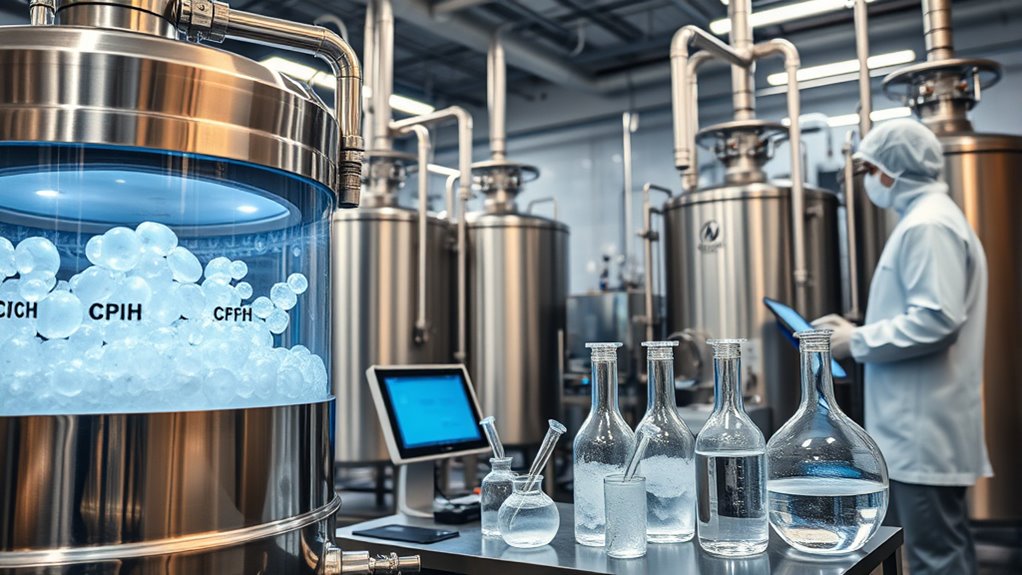
Extraction and production of high-purity phosphoric acid typically involve two main processes: the wet process and the thermal process. Your raw material sourcing plays a pivotal role in ensuring the quality and efficiency of these methods. In the wet process, you start with phosphate rock, which is reacted with sulfuric acid to produce phosphoric acid. To optimize the process, you focus on controlling reaction conditions, reducing impurities, and improving extraction efficiency. The thermal process involves heating phosphate rock at high temperatures, often with silica, to produce phosphoric acid directly. Process optimization here revolves around temperature control, energy use, and raw material quality. Both methods require careful attention to raw material sourcing and operational parameters to produce high-purity phosphoric acid suitable for fertilizer applications. Additionally, monitoring for contamination signs such as color changes or sediment formation ensures product purity and safety. Proper selection of raw materials and precise process control can significantly impact the purity levels of the final product.
Ensuring Quality and Purity Standards in Phosphoric Acid Supply
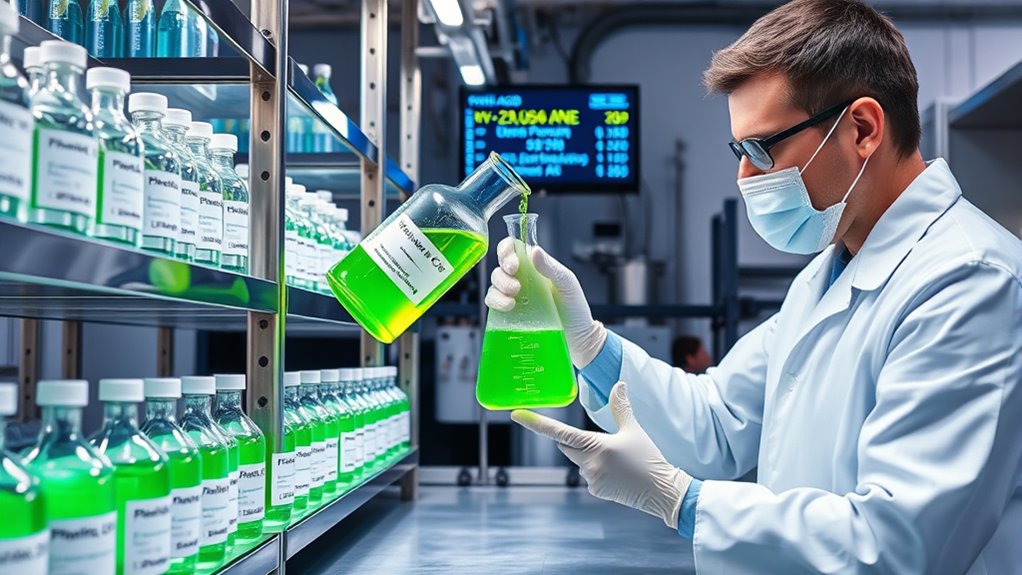
Maintaining strict quality and purity standards in the phosphoric acid supply chain is essential to meet industry requirements and guarantee product performance. You need to assure that your suppliers adhere to rigorous certification standards, which verify their production processes and quality controls. Certification standards like ISO and industry-specific quality benchmarks serve as proof that the phosphoric acid meets purity specifications and safety regulations. Regular audits and testing throughout the supply chain help identify any deviations early, ensuring consistent product quality. By prioritizing suppliers with proven certifications, you reduce risks of contamination and impurities. This approach not only guarantees high product standards but also builds trust with your customers, reinforcing your commitment to delivering reliable, high-purity phosphoric acid for fertilizer production. Incorporating quality assurance practices further enhances the integrity of the supply chain, making it crucial to implement comprehensive supply chain management strategies to maintain these standards consistently. Additionally, monitoring regional regulations and legal requirements can help ensure ongoing compliance and mitigate potential risks.
Key Factors to Consider When Selecting Suppliers
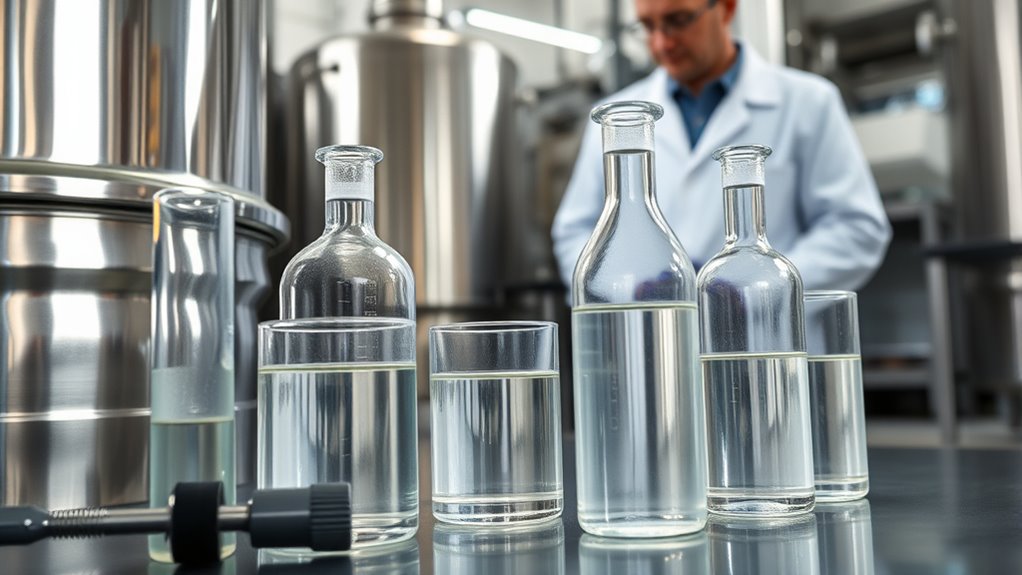
When choosing a supplier for high-purity phosphoric acid, you must carefully evaluate several critical factors to guarantee reliability and quality. First, assess the supplier’s reliability by examining their track record, certifications, and ability to meet delivery schedules consistently. Consistent supply is essential for maintaining production timelines. Next, review their pricing strategies to ensure transparency and competitiveness without sacrificing quality. Be cautious of extremely low prices that might indicate compromised standards or hidden costs. Additionally, consider their capacity for customization, customer support, and the supplier’s reputation in the industry. Reliable suppliers will provide clear documentation of purity standards and compliance with safety regulations. Incorporating remote collaboration tools can also facilitate ongoing communication and transparency with your suppliers, especially in a global marketplace. Maintaining quality standards throughout the sourcing process is vital for ensuring the high purity of phosphoric acid. Moreover, evaluating a supplier’s industry reputation and customer feedback can provide valuable insights into their reliability and service quality. Balancing these factors ensures you select a partner capable of meeting your quality demands while offering fair and sustainable pricing.
Industry Trends and Innovations in Phosphoric Acid Manufacturing
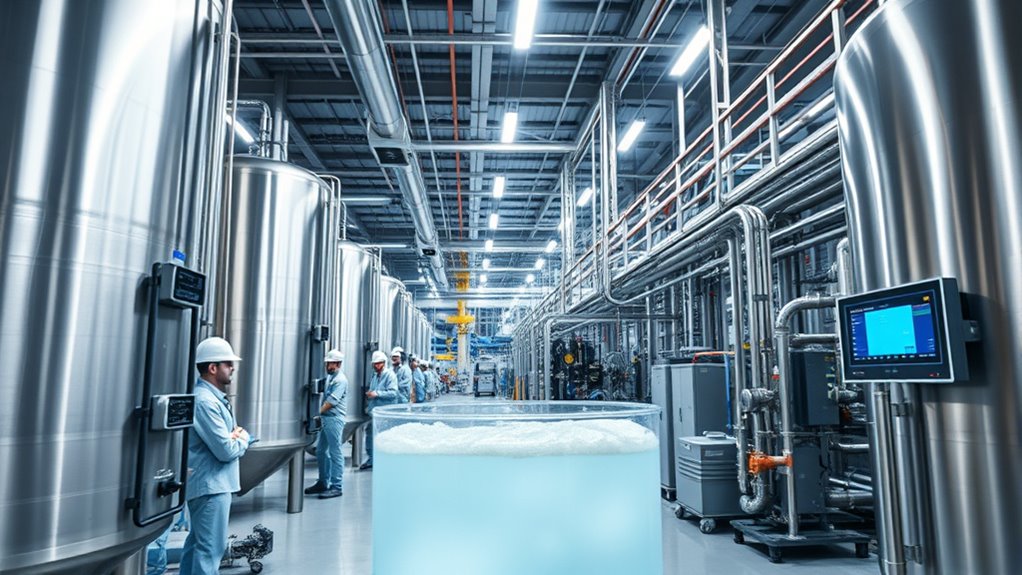
Advancements in manufacturing technologies are driving significant industry shifts toward more sustainable and efficient production methods for high-purity phosphoric acid. As market demand increases, producers are adopting innovative processes like wet-process and thermal methods that reduce waste and energy consumption. These innovations enable manufacturers to meet higher quality standards while controlling costs. Pricing strategies have also evolved, with suppliers offering flexible options to match fluctuating market conditions. Automation and process optimization improve throughput and consistency, helping suppliers stay competitive. Staying abreast of these trends allows you to select suppliers that leverage cutting-edge technology, ensuring reliable supply and cost-effective sourcing. Additionally, understanding the impact of aura variations and technological advancements can enhance your ability to evaluate supplier capabilities and product quality, aligning sourcing decisions with current industry dynamics. Emphasizing manufacturing efficiency can further streamline your procurement process and support sustainable industry growth. Recognizing the role of emerging technologies in manufacturing can provide a competitive advantage and foster continuous improvement in production practices.
Environmental and Sustainability Considerations in Sourcing
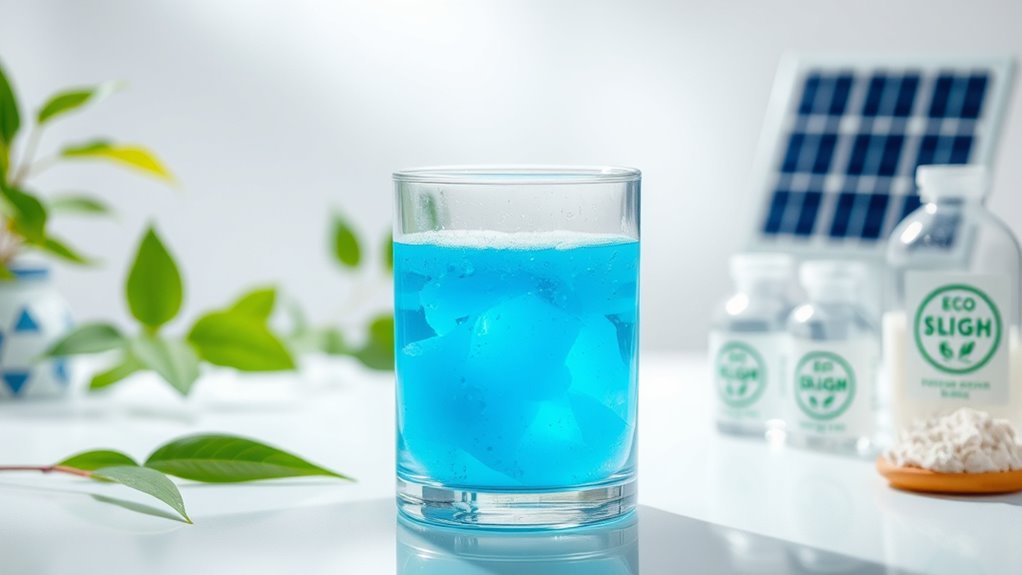
As environmental concerns become increasingly central to industrial sourcing decisions, it’s essential to evaluate how phosphoric acid producers address sustainability. Many companies now prioritize recycling practices to reduce waste and lower environmental impact, transforming by-products into valuable resources. Additionally, some producers are investing in renewable energy sources, such as solar and wind power, to run their operations more sustainably. These efforts help decrease carbon emissions and reliance on fossil fuels. Incorporating renewable energy sources can significantly enhance the sustainability profile of phosphoric acid production. Implementing sustainable manufacturing practices is crucial for reducing the ecological footprint of the industry. Emphasizing sustainable sourcing ensures that raw materials are obtained responsibly and ethically. Sourcing high-purity phosphoric acid with a focus on environmental responsibility means choosing suppliers committed to sustainable practices. By supporting those who implement recycling practices and utilize renewable energy, you contribute to a more eco-friendly supply chain, ensuring that your fertilizer production aligns with global sustainability goals.
Frequently Asked Questions
What Are the Main Applications of High-Purity Phosphoric Acid Beyond Fertilizers?
You might wonder about phosphoric acid applications beyond fertilizers. High-purity phosphoric acid is crucial in industrial uses like food-grade products, where it acts as a acidity regulator and flavor enhancer. It’s also used in the production of detergents, pharmaceuticals, and metal treatments. Its versatility makes it essential in multiple sectors, ensuring you understand its broader industrial applications beyond just fertilizers.
How Does Cost Influence the Choice of Phosphoric Acid Suppliers?
Pricing plays a pivotal part in picking your phosphoric acid supplier. You’ll weigh pricing strategies—balancing cost against quality—while considering supplier reputation for reliability. Cost influences decisions because lower prices might tempt you, but they could compromise purity or service. Trustworthy suppliers with transparent pricing often foster better partnerships. So, you prioritize suppliers whose prices align with your budget while ensuring consistent quality, reliability, and reputable reputation for peace of mind.
What Certifications Should Buyers Look for in High-Purity Phosphoric Acid?
When choosing high-purity phosphoric acid, you should look for certifications that verify quality standards and reliable certification processes. These include ISO certifications, FDA approval, and GMP compliance, which indicate the supplier meets rigorous safety and quality criteria. Such certifications give you confidence in the purity and consistency of the acid, helping you avoid quality issues that could affect your fertilizer production and crop yields.
How Do Geopolitical Factors Impact Phosphoric Acid Supply Chains?
Did you know that over 70% of global phosphate reserves are concentrated in a few countries, making supply chains vulnerable? Geopolitical stability directly impacts phosphoric acid availability, as political unrest or trade restrictions can disrupt production and transportation. To guarantee supply chain resilience, you should monitor international relations and diversify sources. Stable regions help maintain consistent supply, reducing risks of shortages and price spikes in the fertilizer market.
What Are Future Technological Advancements Expected in Phosphoric Acid Production?
You’ll see future advancements in phosphoric acid production focus on innovative extraction methods that boost efficiency and reduce environmental impact. Sustainability initiatives will drive the development of cleaner, more energy-efficient processes, minimizing waste and emissions. These innovations aim to make production more cost-effective and eco-friendly, ensuring a more reliable supply chain. By adopting these technologies, you’ll benefit from higher purity acids and a more sustainable approach to meeting global fertilizer demands.
Conclusion
By understanding extraction methods, quality standards, and supplier choices, you can secure high-purity phosphoric acid for your fertilizers. Staying informed about industry innovations and sustainability practices guarantees you’re making responsible decisions. Why settle for less when the right sourcing can boost your product’s effectiveness and environmental impact? Ultimately, choosing the best supplier isn’t just about quality — it’s about shaping a more sustainable and efficient future for your fertilizers.
